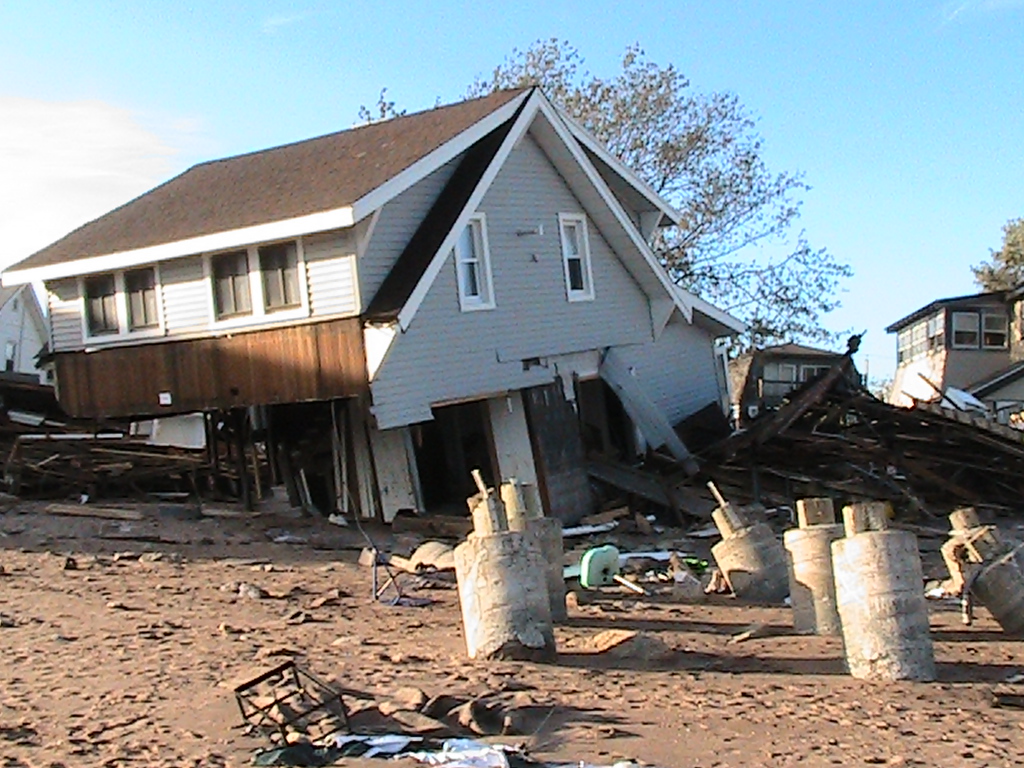After a decade of destructive storms, the National Flood Insurance Program is $24 billion in debt. Fixing it requires new mindsets in Washington and on the shore. Part one looks at NFIP and where it fails.
Private insurers had it right the first time. Nearly 75 years ago, they realized the flood plain was no place to live, and they stopped offering policies on homes whose claims they would only lose anyway. Unfortunately, developers didn’t get the message. In 1965, Hurricane Betsy rocked the Gulf and the U.S. was hit with our first billion-dollar storm.
But instead of encouraging a move out of harm’s way, we created the National Flood Insurance Program. And after nearly 50 years of fighting a losing battle, it’s broke.
NFIP covers about 5.5 million homes, many with policies at below market rates, and it has about $4 billion in annual revenue. But after a destructive decade, the program is now $24 billion in debt. When NFIP’s funds run out, it borrows from the Treasury, so even if you live on Mount McKinley, some of your money goes to flood insurance on our coasts.
Seven of the ten costliest hurricanes have hit in the last 10 years. Combined with rising sea levels—especially along the heavily-populated eastern seaboard where waters are rising three-to-four times faster than the rest of the world—and the cost of coastal flooding will only increase over time if we do nothing.
The Biggert-Waters Flood Insurance Reform Act of 2012 was supposed to overhaul NFIP, to make it stronger and solvent with strict new regulations clarifying the actual risks.

It eliminated coverage for all “severe repetitive loss” properties—the 12,000 properties nationwide that have been damaged again and again. It began phasing out subsidies for grandfathered buildings—those built before 1968. And it required new insurance rates based on new flood data and new maps—finally reflecting the real flooding risks.
Although it passed with strong bipartisan support, Biggert-Waters is not flawless and its implementation has received heavy doses of criticism from developers and coastal property owners.
So earlier this week, another major amendment to our nation’s struggling flood insurance program was signed into law. The Homeowner Flood Insurance Affordability Act reestablishes grandfathering, slows premium increases for primary residences, caps the annual total for premiums, and allows outdated and inaccurate flood maps to be used in establishing insurance rates.
Slowing some of the rapid premium increases in Biggert-Waters (up to 25% annually) is a good compromise. If we’re going to accurate assess the risks we face, we should do so affordably. But grandfathering and bad maps will only set us further back and end up costing us more.
Environmentalists, scientists, and conservatives have all voiced opposition to the new law. The Natural Resource Defense Council, in its comments to Congress earlier this month, very effectively summarized that the new law would “keep people and properties in harm’s way, exacerbate the insolvency of the NFIP, and continue to leave U.S. taxpayers to bear the escalating costs of future damage.”
Washington is backpedalling when it should be charging ahead. We need sound science to better protect our homes and businesses. A bankrupt NFIP, further weighted down by this new law, leaves us all unnecessarily vulnerable to rising damage costs.
Part two looks at how flood insurance and coastal vulnerabilities are playing out right here on Long Island Sound, and what could possibly be done about it.
Posted by Tyler Archer, Outreach & Development Associate for CFE & Save the Sound

2 thoughts on “Faulty Flood Insurance leaves Coastal Communities in Over Their Heads (Part 1)”
Comments are closed.